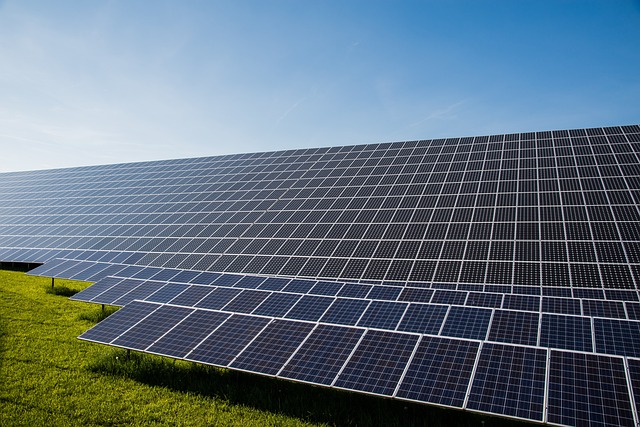PCBs for Power Generation and Distribution
The industry considers anything higher than normal voltage for PCBs as high voltage. Many pieces of equipment operate at high voltages, including power supplies, EV boards, and Inverters. Although not official, the industry considers high voltage for PCBs to be above 100 V.
To prevent arcing and failure of PCBs when they operate at high voltages, certain design practices are necessary. The designer must take into account parameters such as basic insulation, functional insulation, altitude of operation, creepage distance, clearance, reinforced insulation, double insulation, supplementary insulation, and conductive elements.
The substrate the designer calls out is very important for high voltage the PCBs they use for power generation and distribution. This is the basic insulation for the high voltage design. The material must not allow arcs to form when the PCB is operating.
Contact our experts today for any requirement of high voltage PCBs for power generation and distribution. We will help your designers choose the best material so that your PCBs will be reliable and safe and will continue to function perfectly at high voltages even as it ages.

Materials for PCBs for Power Generation and Distribution
PCB Trace recommends specific materials for PCBs for power generation and distribution. These include:
FR4 Glass Epoxy
The dielectric breakdown voltage for FR4 glass epoxy laminates is high, and therefore, the material is suitable for high voltage operation. However, FR4 has higher porosity as compared with Polyimide. That makes it susceptible to contamination.
Although FR4 is applicable for high voltage use, it has a weak edge structure. Any crack at the edge of an FR4 board will decrease its dielectric value, and the high voltage may damage adjacent electronic components.
BT Epoxy
PCB Trace recommends using BT Epoxy material for PCBs operating at medium voltages. That makes the BT Epoxy material suitable for applications using planar coils featuring strong sidewalls.
Isola Laminates
Although expensive, Isola Laminates are the recommendation when self-extinguishing boards are necessary. This material is good for extinguishing arcs. The Isola laminate works best with single- or double-layered boards.
Comparative Tracking Index for High Voltage PCBs
The Comparative Tracking Index or CTI of a material provides information whether it can withstand high voltages. The CTI of a material indicates its breakdown voltage in as standardized test.
Manufacturers offer CTI numbers in six categories, ranging from 0 to 5. A CTI rating of 0 indicates the material can withstand voltages above 600 V, while a rating of 5 indicates a working voltage below 100 V.
For other applications, PCB Trace follows International Industry standards such as IPC-2221 and IEC-60950-1 for selecting materials for use at high voltages.
Other environmental factors can also affect the maximum voltage that a board material can withstand. For instance, surface contamination may significantly reduce the level of voltage that the board can withstand without arcing. Low atmospheric pressure increases the rate of arcing at a specific voltage.
Minimum Requirements for High Voltage PCBs
PCB Trace recommends a few design parameters for high voltage PCBs, with a difference of 80V between adjacent conductors:
- Minimum of 0.1 mm between the internal layers.
- Uncoated external layers must have a minimum separation of 0.6 mm.
- Coated external layers must have a minimum separation of 0.13 mm.
Apart from the above, PCB Trace follows some rules for increasing the reliability of its high voltage PCBs:
- The surface finish is made smooth to minimize the occurrence of arcs
- Follow safety standards for spacing (see above)
- Smoothing burrs on board edges after de-paneling
- Avoiding sharp corners in traces and pads during layout
Please contact our experts for any type of PCBs you require for your power generation and distribution project. We can design your PCBs, fabricate them, and also assemble them to your specifications.
Clearance and Creepage Distances in High Voltage PCBs
Although high voltage PCBs may have tight spacing requirements, they must abide by the clearance and creepage distance requirements to operate safely. Failure to maintain the necessary distance between two adjacent conductor elements on the PCB can easily lead to the formation of an arc.
Clearance between two conductor elements refers to the distance between them through the air. Without sufficient clearance, a strong voltage difference may cause an arc to break out.
Creepage between two conductor elements refers to the distance between them along the surface of the material of the PCB. It is necessary to maintain proper creepage distance for preventing the board from becoming overcrowded.
High Voltage PCB Applications
PCB Trace offers many types of PCBs for high voltage applications in power generation and distribution. These include:
- Power Supplies
- Inverters
- Converters
- Supplies for High-Tech Lasers
- High-Altitude Aircraft
- Space Equipment
- Spacecrafts
To learn more about PCBs for power generation and distribution, contact us . Our experts understand the processes in fabrication and supply of PCBs. They can help you with develop the right parameters and guidelines for your specific project. We also offer PCBs in a wide range of materials to suit your specific application.
Call us today and discuss with our customer support team about your project.
+408-580-0722




